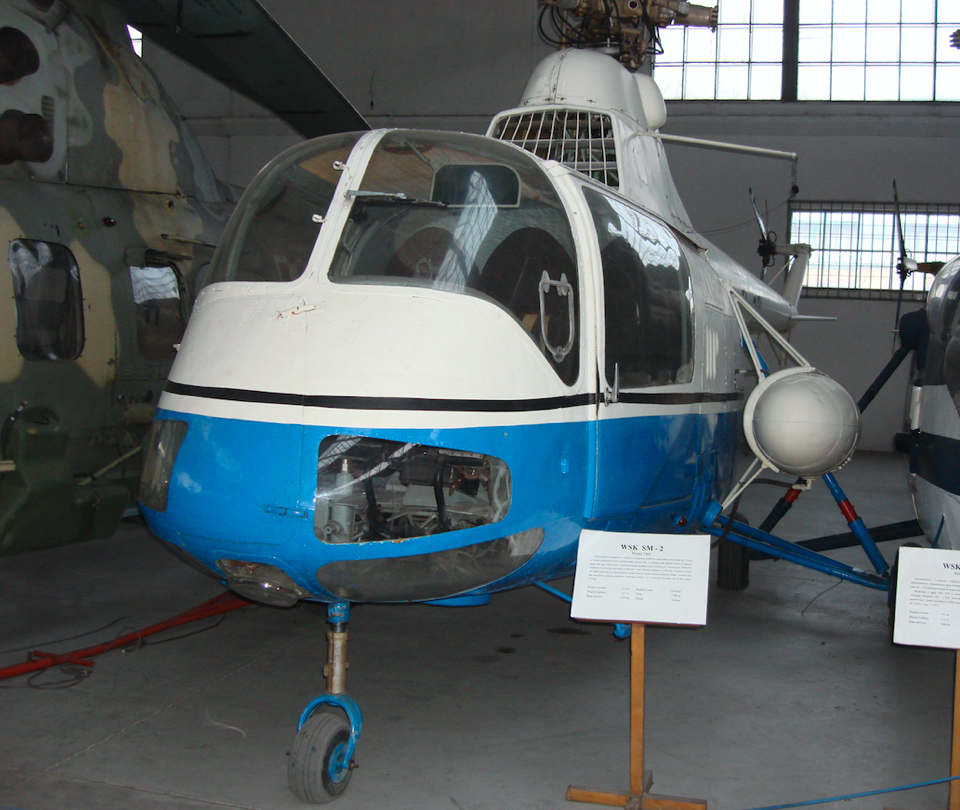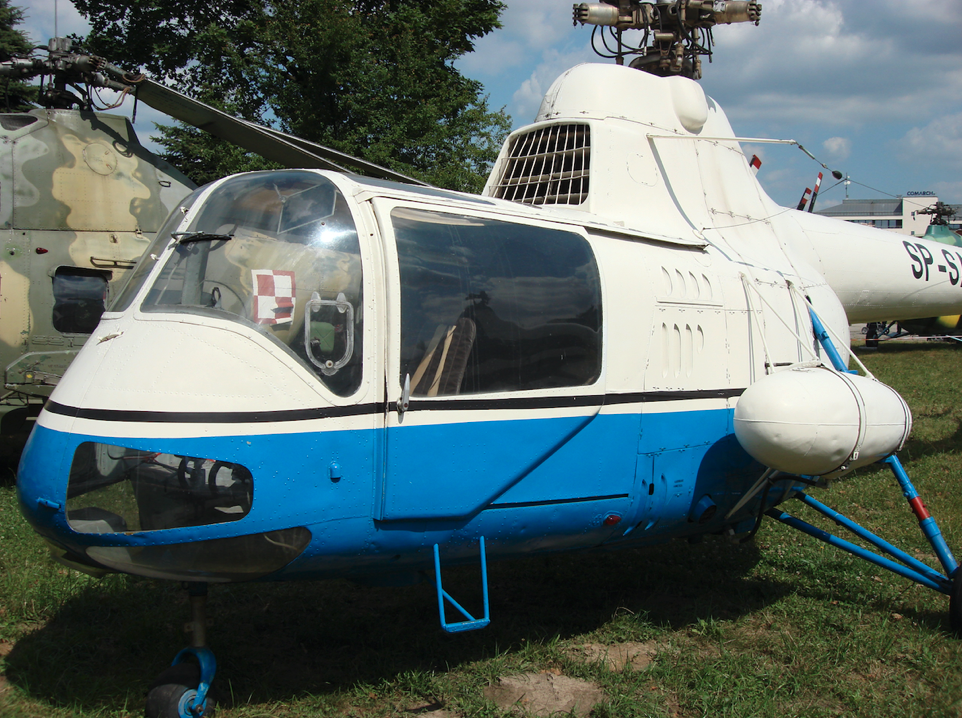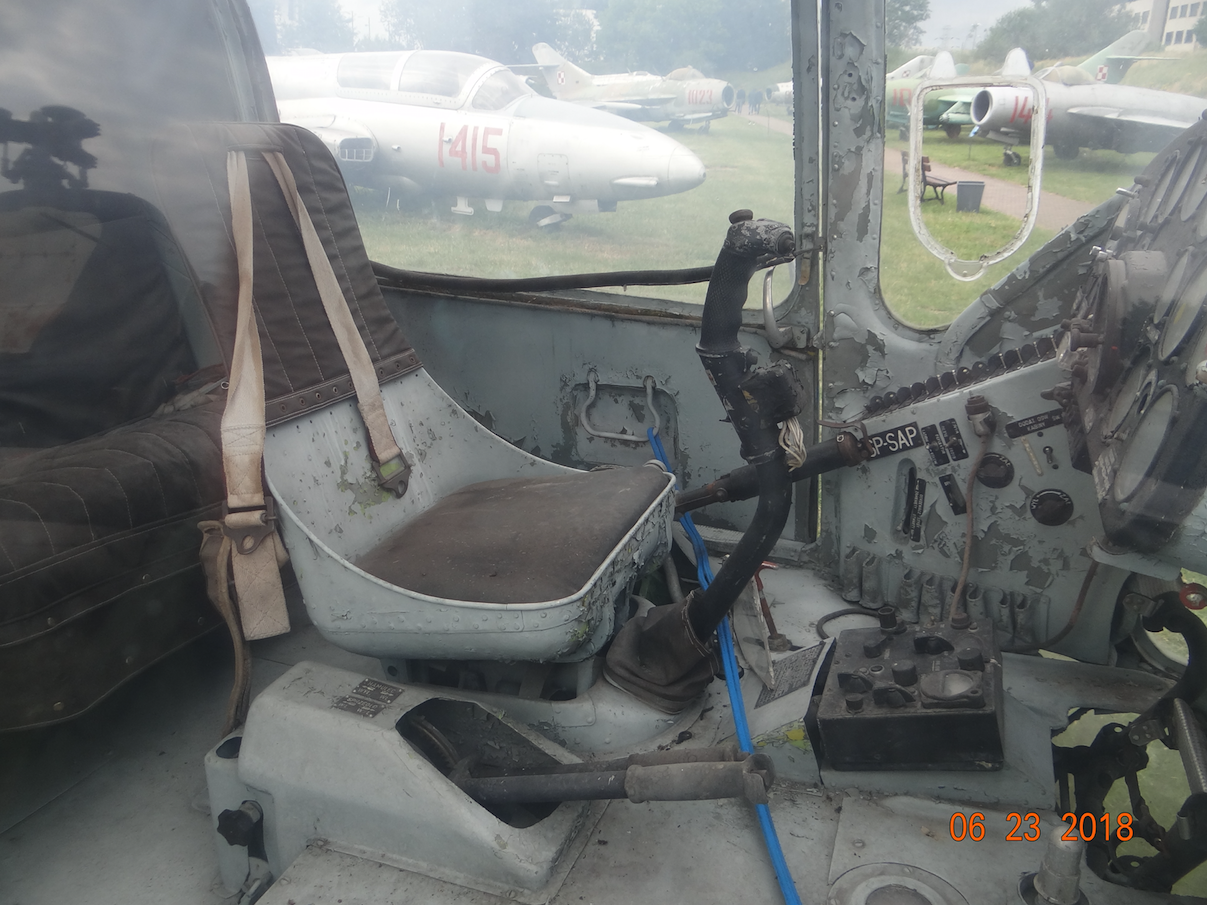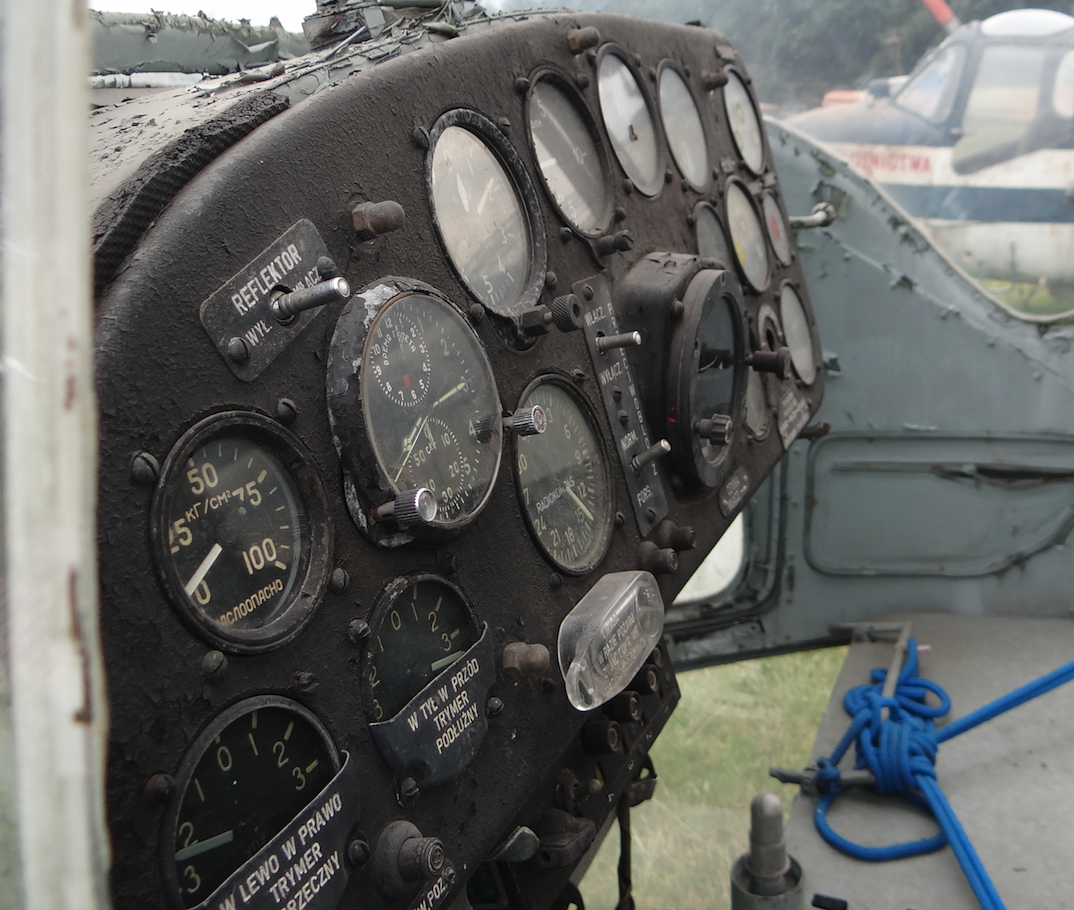Kraków 2018-01-04
165a Section 1959-11-18
PZL WSK Świdnik SM-2
History
The idea behind the creation of the SM-2 helicopter was to use the excess power of the Lit-3 piston engine installed in the SM-1 helicopter. An engine with this power should easily carry five people on board, not just three or four as before. In addition, the SM-1 had several other operational shortcomings. For example, in the school version, the instructor seated in the back had significant limited visibility, especially what is happening right in front of the helicopter below. Another problem was the transport of the sick in gondolas and access only through a not very practical sleeve. It was not a comfortable situation for the patient and the medical staff. Another problem was how to open the door of a car-type helicopter. This made it practically impossible to open them during the flight. The elevator used to lift people onto the deck of the helicopter while hovering could not be practically used. Therefore, for this type of operation, the door was removed before the flight. The SM-1 has a fixed landing light. This meant that landing after dark, in unfamiliar and unknown terrain was very risky. The use of a movable searchlight would significantly increase safety. Another drawback was the partition between the cabin and the drive compartment. This wall became very hot and created unfavorable conditions in the cabin.
Officially, it was forbidden to criticize the technique of the "leading" world economy. However, Polish engineers were well aware of the disadvantages of the helicopter, which could be remedied. In 1957, a favorable political climate was created for the development of the program of extensive modernization of the helicopter. In WSK PZL Świdnik, an independent group of designers was created under the leadership of engineer Jerzy Tyrch.
Initially, the new helicopter was designated S-2, but was soon changed to SM-2.
The main change was the enlargement of the cabin to accommodate a sick person on a stretcher and larger loads. Similar modifications were made in the West on the local machines. In the new cabin of the SM-2 helicopter, there are two seats next to each other in the front. Thanks to this, in the school version, the student and the instructor sat next to each other and had the same good field of view. In other versions, the pilot sat on the left seat and a passenger on the right seat. At the rear of the cabin there is a three-passenger couch. A major change was the fitting of a rear sliding door to open it. Thanks to this, they could be opened during the flight. Despite the large door, it was not possible to carry the stretcher with the patient through it into the SM-2 helicopter cabin. The designers dealt with this problem by installing a small, additional door in the front of the fuselage on the right side.
The wall separating the cabin from the drive compartment was made as a double wall. Air is introduced into its space, which cools the part of the wall from the side of the cabin.
A movable searchlight (searchlight) was installed to facilitate landing after dark in unknown terrain.
In the SM-2, the power unit was left unchanged: the engine, main gear, tail rotor shaft, main rotor, tail rotor, the entire fuel and lubrication system.
Three SM-2 prototypes were built; one for static and two for flight tests, with Nos. S-201001 and S-201002. The prototype of the SM-2 helicopter was flew on November 18, 1959. The pilot was Captain Pilot Stanisław Wiącek. Then the SM-2 helicopter was subjected to factory trials. The tests lasted just over one year and were completed in January 1961.
The first official presentation of the SM-2 helicopter took place in September 1960, during the so-called Lodz Aviation Salon, which was part of the Polish Aviation Day celebrations.
The SM-2 helicopter was put into mass production, which lasted in the years 1960-1963. 86 machines were built in four production series. The first 7 pieces, the second 19 pieces, the third 30 pieces and the fourth 30 pieces. Some sources give a different number of machines built; from 85 to 91 copies. Several SM-2 helicopters were sold to Czechoslovakia and Romania.
At the beginning of the 60’s it was over after the political thaw. That is why all inventions and modifications in the Polish Aviation Industry were not well received. It was necessary to get rid of them. For the SM-2 helicopter, it was necessary to create a legend that it was not good. And such a legend was created. The SM-2 was said to have fallen short of what was hoped for. That he is inferior to his Soviet progenitor. That it has worse take-off properties and poorer hover performance. Design errors were also found; improper carburetor air intake design, resulting in a drop in power unit power. It is true that this defect was removed in the machines already produced, but it was after the decision to discontinue the production of the SM-2. Production of the SM-2 ended in 1963, while the SM-1 was produced until 1965.
The SM-2 helicopter was built in four basic versions: passenger-transport-liaison, sanitary for transporting one patient in a lying position, in the school version, as a two-wheeler and in a crane version. The crane version has a winch with a load capacity of 120 kg. This version was used as a rescue helicopter over land and water. Most of the production went to the Polish Army. About 70 machines were used in the army. The first machines went to the 36th Special Air Transport Regiment in Okęcie. Most of them were used by artillery brigades. In addition, SM-2s were in Dęblin, the forces of the KBW (Internal Security Corps), WSW (Military Internal Service), the Navy and others. The civil and medical aviation used 4-5 machines. Single machines were used by the Institute of Aviation, WSK PZL Świdnik and the Ministry of the Interior. SM-2 helicopters began to be withdrawn from use in the 70s, and were replaced by PZL Mi-2 helicopters. The last SM-2 from the Polish Army was withdrawn in 1979. In Poland, 5 helicopters were lost in accidents.
Written by Karol Placha Hetman
Kraków 2018-01-04
165a Section 1959-11-18
PZL WSK Świdnik SM-2
Construction
The SM-2 helicopter is built in a classic layout, with one main rotor and a tail rotor.
The design of the SM-2 is much more modern than the SM-1. First of all, the SM-2 cabin is of a semi-crown structure. There is a space truss in the SM-1. In the SM-2, the engine compartment remained unchanged, i.e. it is a structure made of a truss. The tail beam is semi-crowned. The constructors did not decide to make the entire helicopter as a half-shell structure, because the scope of work would be very large and it would be practically a completely new helicopter. The propulsion system was taken from the SM-1 helicopter, and only the front part of the fuselage was rebuilt.
The main rotor consists of three blades. The girders are made of steel tube with a variable cross-section. Wooden ribs are used, and the cover is made of plywood and canvas. The blades are equipped with a liquid anti-icing installation. The active factor was 96% rectified spirit, which flowed to the leading edges through small holes in the steel caps.
The cabin takes 5 people on board. The cabin is richly glazed and has a large sliding door to the rear. Passengers have at their disposal adjustable seats with parachute bowls or a regular sofa. In the front part of the cabin, on the right side, there is a small door that opens outwards, which allows the stretcher with the patient to be inserted into the cabin.
Fixed, three-support chassis with a front wheel. All single wheels. Self-aligning front undercarriage.
SM-2 installations.
The SM-2 helicopter has rigid pushers and lines in the control system. There is no hydraulic boost system.The machine was equipped with a VHF R-800 radio, radio altimeter, automatic ARK-5 radiocompass, signaling electric rocket launcher and a movable searchlight (searchlight).
SM-2 drive.
The machine is powered by one seven-cylinder Lit-3 radial engine with a take-off power of 575 HP, a continuous power of 420 HP and a cruising power of 325 HP. It is a license version of the AI-26W engine built at WSK PZL Rzeszów. The fuel tank has a capacity of 240 liters. It is possible to install an additional tank with a capacity of 135 liters. The capacity of the oil tank is 28 liters. A fire protection system has been installed in the drive compartment. Carbon dioxide and ethyl bromide were used as the quenching agent.
Data T-T SM-2.
Rotor diameter 14.35 m
Total length 16.97 m
Hull length 12.08 m
Height 3.30 m
Curb weight 1 925 kg
Take-off weight 2,400 – 2,550 kg
Fuel 240 liters + 135 liters
Max speed 170 km / h
Cruising speed 130 km / h
Service ceiling 3 500 m
Range 310-500 km
Opracował Karol Placha Hetman
Kraków 2018-01-04
165a Section 1959-11-18
PZL WSK Świdnik SM-2
Tally
The SM-2 helicopter was put into mass production, which lasted in the years 1960-1963. 86 machines were built in four production series. The first 7 pieces, the second 19 pieces, the third 30 pieces and the fourth 30 pieces. Some sources give a different number of machines built; from 85 to 91 copies. Several SM-2 helicopters were sold to Czechoslovakia and Romania.
Written by Karol Placha Hetman







